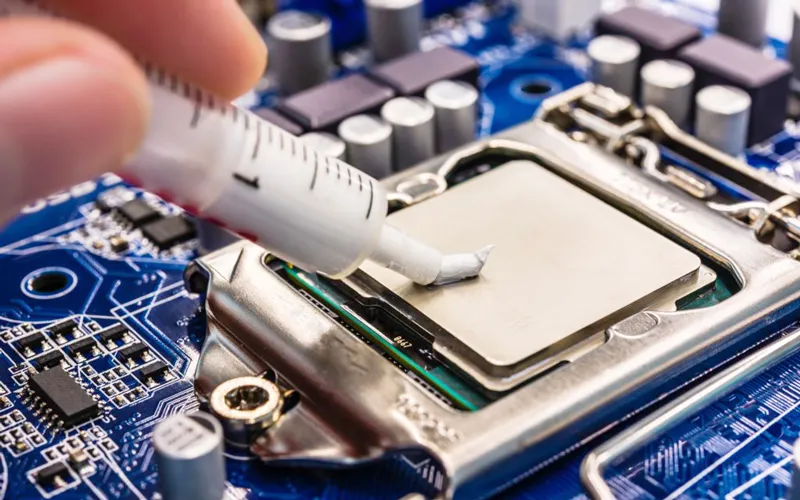How Much Do You Know About CPU Thermal Grease?
- Posted on:2023-10-24 09:08:00
- Source:AOK Thermal Pad Manufacturer FAQs
Thermal grease are an essential component in electronics that help dissipate heat away from components and prevent them from overheating. Thermal grease, also known as thermal paste or thermal compound, is a thermally conductive material used to improve heat transfer between electronic components, such as CPUs, GPUs, and heat sinks. It fills microscopic imperfections on the surfaces of these components, enhancing thermal contact and facilitating the efficient dissipation of heat.
Purpose: CPU thermal grease is a thermally conductive material used to improve heat transfer between the CPU (Central Processing Unit) and it's heat sink. It fills microscopic imperfections on the surfaces of the CPU and heat sink, ensuring better thermal contact and enhancing heat dissipation.
Thermal Conductivity: Thermal grease is formulated with thermally conductive particles, such as metal oxides or ceramics, suspended in a silicone or carbon-based compound. The thermal conductivity of the grease determines it's ability to transfer heat efficiently. Higher thermal conductivity values allow for better heat flow from the CPU to the heat sink.
Application: Proper application of thermal grease is crucial to achieve optimal thermal performance. A small amount, typically a pea-sized dot or a thin line, is applied to the center of the CPU's integrated heat spreader (IHS). When the heat sink is installed, the pressure helps spread the grease evenly, filling gaps and voids for improved thermal contact.
Types: There are different types of thermal grease available, including silicone-based, carbon-based, metal-based, and hybrid blends. Each type has specific characteristics and thermal conductivity levels. The choice of thermal grease depends on factors such as application requirements, temperature range, and electrical conductivity considerations.
Electrical Insulation: Most thermal greases are electrically non-conductive, meaning they do not conduct electricity. This property helps prevent short circuits or electrical damage when the grease comes into contact with CPU pins or other electronic components.
Maintenance: Over time, thermal grease can dry out or degrade, reducing it's effectiveness. It's recommended to periodically clean and reapply thermal grease when removing and reinstalling the CPU or heat sink. This maintenance helps ensure optimal thermal performance and heat dissipation.
Alternatives: In addition to thermal grease, other thermal interface materials exist, such as thermal pads and phase change materials (PCMs). Thermal pads are pre-cut sheets that provide a convenient option for heat transfer, while PCMs change their state (solid to liquid or vice versa) to improve heat transfer under specific operating temperatures.
When selecting thermal grease, it's important to consider factors such as thermal conductivity, compatibility with the components and heat sink, electrical properties, and specific application requirements. Consulting the CPU or component manufacturer's guidelines and recommendations can provide valuable information on the appropriate thermal grease to use.
If you would like to learn more about AOK performance thermal materials, please visit our website at www.aok-technologies.com


